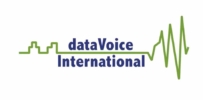As a utility provider, you offer customers the building blocks for a comfortable life — from electricity to water to internet connectivity. The more your organization can stay in the background, the better you’re doing from a customer experience perspective. Your services simply work, and that’s that.
By the same token, the best way to answer customer questions is to be so forward-looking that you have the solution before anyone even thinks to ask. This level of fast, responsive and customer-focused operations is enabled by key technology upgrades.
If you want to keep residents happy by having answers to their questions the minute they’re asked — or even before — you need the right tech tools. This is where a modern outage management system (OMS) enters the picture, becoming a central pillar of your customer experience.
Big questions, quick answers
Think like your customers for a moment. What kinds of questions are most pressing and urgent when it comes to utility service? These are the queries you can become better at answering with the right OMS.
This includes questions such as:
What’s wrong with my utility service?
People don’t like feeling helpless. During a utility outage, customers can feel like they’re in the dark — literally in the case of a power interruption. The more information a utility provider can give customers about the cause of a problem, the better.
A modern OMS delivers valuable data points to your team’s fingertips, plotted out on a map and based on input from grid monitoring infrastructure. This is not only extremely useful as you dispatch crews to investigate and repair the suspected cause of the problem, it can help you deal with customers’ questions.
When will the power/water/internet come back?
This question follows naturally from the previous one, and it’s even more pressing. While people will be curious about what’s gone wrong, they’ll be especially eager to know what’s being done to resolve the problem. Once again, having a better source of data will help you set their minds at ease.
Coordinating a service restoration effort guided by an OMS is a scientific process, with field and office personnel sharing data and directly addressing the cause of the problem. This means that not only will you be able to give your customers a clear estimate about restoration times, that estimate will be shorter than if you were trying to solve the problem through trial and error.
Are you aware customers are suffering an outage?
When customers lose utility service, they may call in to make sure you are aware of the issue. After all, if the utility provider doesn’t know there is an interruption, how can the company fix it? When you have an accurate, real-time picture of your infrastructure’s status, you can inform your customers immediately that you are aware of the issue and are working on a fix.
But what if a customer’s call is the first you’ve heard about a service outage? In this case, the OMS can still be extremely helpful. You can use the system to ping the infrastructure in the area and determine its status, pinpointing the problem. Then it’s a simple matter of plotting out the issue on the map and dispatching a field crew to make the fix.
Delivering answers in advance through IVR
Answering the questions above is a big part of being a helpful, responsive utility provider. But how can you take the next step and start giving truly proactive responses? The answer, once again, comes from technology.
By integrating an up-to-date interactive voice response (IVR) system with your OMS, it’s possible to reach out to customers quickly and effectively through their platforms of choice. Don’t let the name fool you, an IVR can do more than receive and make voice calls. Modern systems can also reach your customers through email and text.
Communications possibilities with IVR and OMS integration include:
- Reaching out in advance of a planned outage, so that affected customers don’t have to call in to learn what is happening or when service will be restored
- Proactively contacting consumers during an unplanned outage, letting them know the issue is being worked on and keeping phone lines clear during the emergency
- Fielding customers’ calls for information without the need for a live operator, keeping staff free to work on other duties while still providing answers
- Automating simple requests for information, such as the status of an account — advanced IVR tools even let customers pay bills by phone
When you have the right suite of technology in your office, your response to customers’ top questions and concerns can be more effective than ever, bordering on precognitive.
Read our success stories to find out how other utility providers have made these upgrades and more, all with the aid of modern tech tools.

